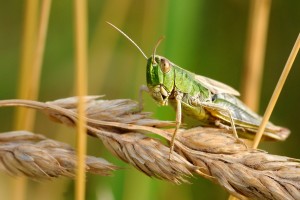
FAO welcomes new allocation to aid surveillance and control in the Horn of Africa
Brussels/Rome: the European Union (EU) has allocated €8 million that will enable countries in the Horn of Africa to maintain a state of readiness in the face of a possible resurgence of Desert Locusts.
The European Commission announced the funding – from the European Civil Protection and Humanitarian Aid Operations (ECHO) – as another example of the EU’s sustained commitment to control this upsurge since its early days in 2020.
While the upsurge continues to decline in the Horn of Africa thanks to control operations, recent rainfall has enabled swarms in eastern Ethiopia and northern Somalia to mature and lay eggs. Additional breeding of the voracious pest may also take place in northern Kenya but on a much smaller scale.
Also read: A space age boost to surveillance of Desert Locusts
The new funding will be used to bridge time-sensitive, critical gaps in procurement, survey, and control operations in the remaining two most-at-risk countries, Ethiopia and Somalia. It will also enable a quick response if the situation changes and needs arise in Kenya and the Sudan. It is designed to ensure the continuity of activities carried out by FAO in support of national governments so that the locust fighting force assembled in East Africa in the past year remains vigilant and ready to contain any new threats to the livelihoods of agricultural communities.
The Director-General of the Food and Agriculture Organization of the United Nations (FAO), QU Dongyu, while welcoming the EU contribution, thanked the European Union and all other supporters for their generous contribution and ongoing assistance in the battle to control the Desert Locust upsurge, enabling critical livelihood-safeguarding activities.
ECHO’s latest contribution will also support the procurement of additional biopesticides to help sustain control activities beyond the second quarter of 2021.
As the record-setting locust upsurge gained momentum in East Africa last year, the European Commission was an early responder to the threat, providing €25 million from its Directorate-General for International Cooperation and Development (DEVCO).
Additional EU contributions of €6.1 million came from ECHO in 2020, including a €5.1 million allocation for Somalia, South Sudan and the Sudan.
With support from the European Union and a number of other donors, FAO and governments have scored major successes in containing the worst recorded locust upsurge in Ethiopia and Somalia for 25 years and the worst infestation that Kenya has experienced in 70 years.
The Desert Locust is considered the most destructive migratory pest in the world and a small swarm covering one square kilometer can eat the same amount of food in one day as 35 000 people
The scourge’s sweep through East Africa was considerable but locust control operations have prevented the loss of four million tonnes of cereal and 800 million litres of milk production while protecting the food security of 36.6 million people and avoiding $1.57 billion in cereal and milk losses. The locust control effort in East Africa also helped avert a further spread westward to Africa’s vulnerable Sahel region.
– global bihari bureau





